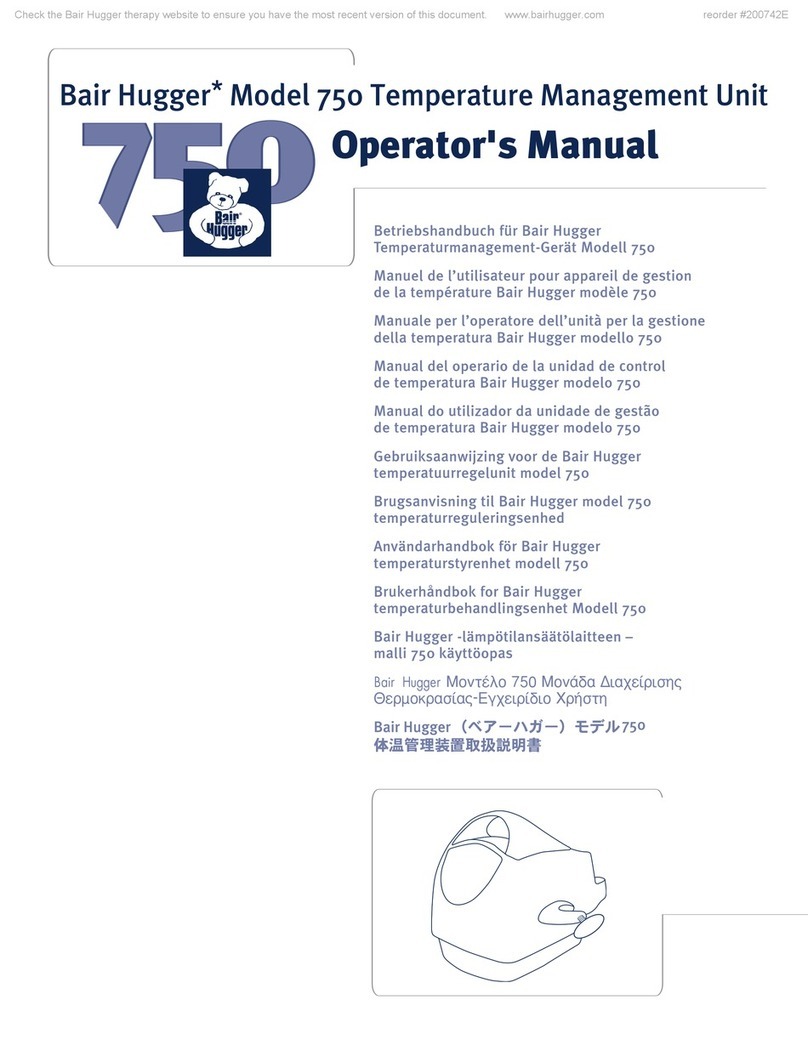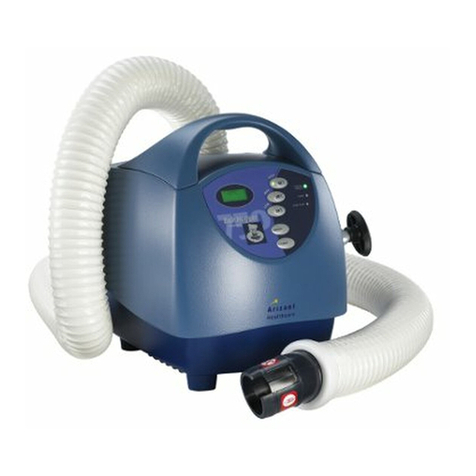
Bair Hugger 500/OR Service Manual
4
Important Information
Explosion Hazard
Do not use warming units in the presence of flammable
anesthetics.
Electrical Shock Hazard
Do not disassemble the warming unit; refer to an authorized
service technician. There are electrically live parts within the
warming unit when it is connected to the power source, even
when the switches are in the OFF or STANDBY position.
Electrical Interference
If radio frequency interference with monitoring equipment
should occur, connect the warming unit to a different power
source.
Read Before Servicing Equipment
The repair, calibration, and servicing of the warming unit
requires the skill of a qualified medical equipment service
technician who is familiar with good practice for medical
device repair. If service is designated as not requiring
manufacturer’s attention, the technical information is provided
in this service manual or will be provided, on request, by
Arizant Healthcare Inc.
Refer to Service Manual
Perform all repairs and maintenance in accordance with the
instructions in this service manual.
Safety Inspection
Perform a safety inspection after making repairs to the
Bair Hugger warming unit and before returning the warming
unit to service. A safety inspection should include a test of the
operating temperatures (described in this service manual), the
Over Heat alarm system, as well as a leakage current test.
Proper Use and Maintenance
Arizant Healthcare Inc. assumes no responsibility for the
reliability, performance, or safety of the equipment if:
• Modifications or repairs are performed by non-authorized
personnel.
•The equipment is used in a manner other than that
described in the Operator’s or Service Manuals.
• The equipment is installed in an environment that does not
meet the relevant grounding requirements.






























